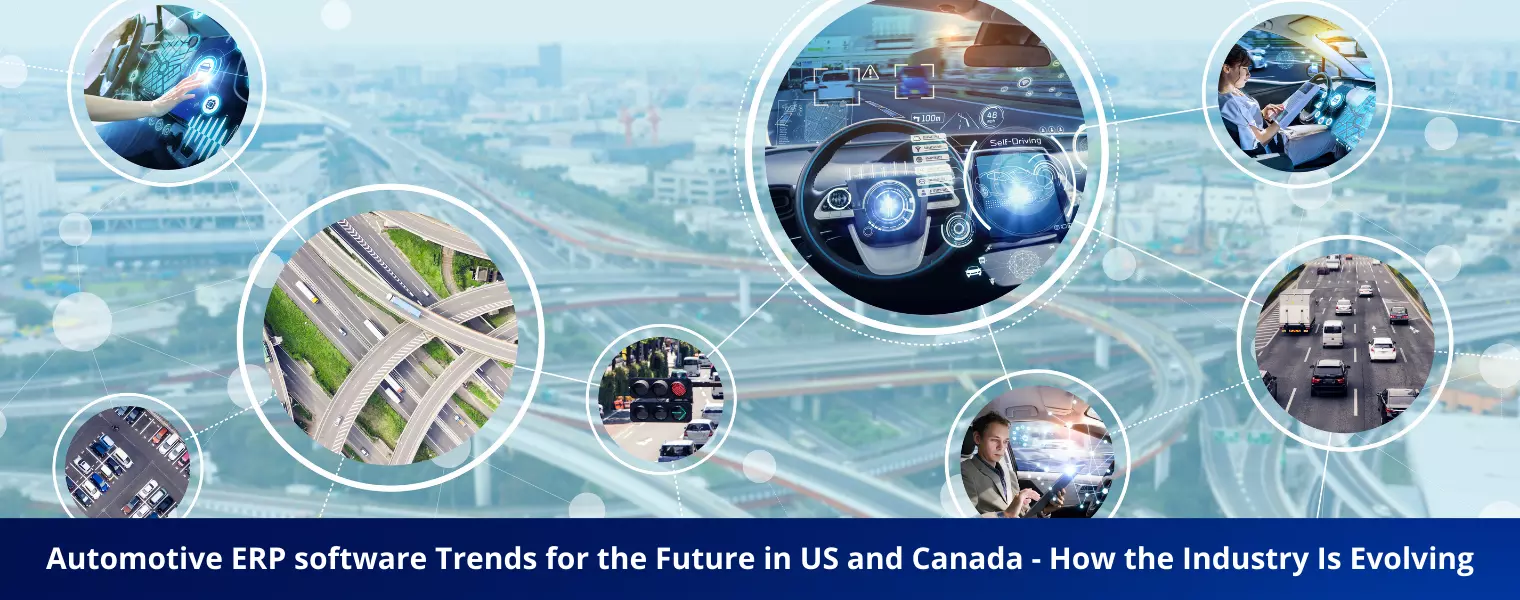
Companies must transform to meet today's challenges, and the software provider on which they rely must mutate their products to be better suited to the next generation of organisations. That is exactly what is happening with the automotive ERP software. Here are my observations on how automotive ERP software in US and Canada is evolving, as well as my advice on how to choose ERP software.
If it's true that the top priorities for software today are flexibility and ease of use, then ERP's future direction fits the bill. I believe we can expect automotive ERP systems to become easily extensible platforms that match individual companies' business processes and provide the ability to build extensions in whatever technology people prefer — without users needing to understand the automotive ERP's internal workings.
Rather than coding, I believe we will soon be able to extend and integrate ERP using technologies we are already familiar with, then use APIs and extensibility toolkits to reach in and out of it. There will also most likely be a high level of integration with existing productivity tools like teams, Slack, google meet and zoom.
With its monolithic UX of hundreds of menu items, thousands of screens, and millions of interdependent fields, an ERP software no longer allows you to do everything. However, what was once an invasive, complicated system with a user interface and processes that no one understood — and where users went to begin a transaction — is set to evolve into a pervasive, easy-to-use, self-driven tool that begins with an analysis and then invites the user into a conversation.
I believe we are not far from a future in which people will be able to complete 80% of their tasks with a conversational experience provided by an enterprise digital assistant. When a task can't be completed via chat because it's too complicated, the system will know to ask for what additional information it requires before proceeding. Focus task apps with a narrowly defined UI designed to handle just that issue could enable this.
By 2026, the global ERP software market is expected to be worth $66.38 billion. According to our observations, many businesses are pursuing digital transformation aggressively and at a much faster rate than expected.
I don't see any disadvantages to using only SaaS. It's not a question of if, but when you'll migrate to the cloud as long as you have 99.8 percent uptime or higher. Hybrid will be around for a while longer as a stepping stone for companies concerned about security, but every business may eventually shift entirely to subscription-based cloud solutions.
We can expect to see initial implementations accelerated through automation and the use of pre-configured vertical-specific solutions based on already proven industry standards. Many businesses are considering this, and many are already promoting this standardised, templated solution. It's faster, easier, and less expensive, just like using templates in other areas of life.
If you truly want to reap the benefits of a multi-tenant cloud solution — operational efficiencies, customizations, integrations, extensibility, and, in many cases, UX — you must use a solution designed specifically for that deployment scenario.
If you do a "lift and shift" on a hosted solution, your legacy customizations will still be present, so you'll always be dealing with the same issues, and you'll still need to go through the testing phase to ensure everything works when the vendor updates.
Despite the fact that we've jumped on the AI bandwagon and talk a lot about automation, I believe AI is over-hyped. From my perspective, it's not so much "intelligence" as it is math. You can accomplish a lot with machine learning, but you can also accomplish a lot without it.
For me, it always starts with a use case — if you don't understand the problem you're trying to solve, AI, specifically machine learning, won't be able to solve it for you, and you shouldn't believe the results it provides. You must examine the various business processes that exist within each company and find a way to automate them. In some cases, this is accomplished through machine learning; in others, it is accomplished without the use of AI-related technologies.
DoFort is the best automotive ERP software in US and Canada Overall, ERP is set to evolve and changes to fit the needs of users and their business goals. We at DoFort Technologies keep an eye out for these trends and the new technology, and how our users can get benefits from the new technology trends. For more information you can reach us or schedule a free meeting at info@doforttech.com
Welcome to DoFort !